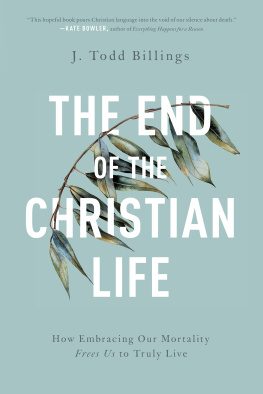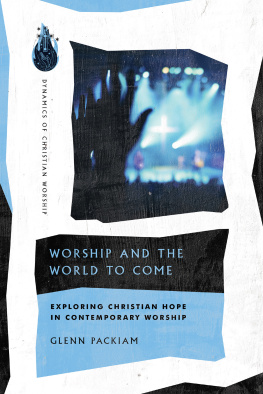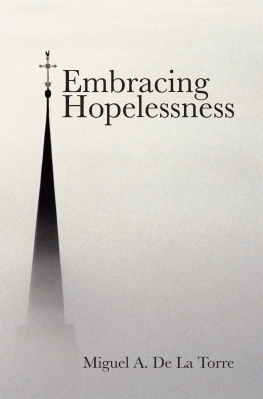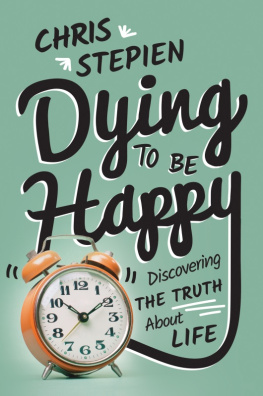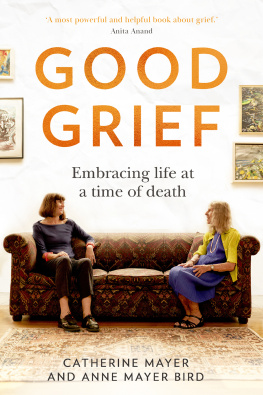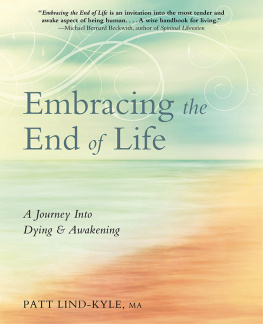Endorsements
The Christian tradition has long valued learning the ars moriendi (the art of dying), not because the faith is unduly negative or pessimistic but because it has understood the inseparable connection between ones future death and ones present life. In our contemporary Western world, we do all we can to ignore and downplay deathbut living in this denial is hurting us in ways we dont even realize. Todd Billings offers us the great gift of a contemporary ars moriendi , providing a textured narrative that weaves together personal stories and wise theological reflection. With Todds help we can learn to live in the shadow of death in a way that is painfully realistic, honestly liberating, and ultimately hopeful.
Kelly M. Kapic , author of Embodied Hope: A Theological Meditation on Pain and Suffering
Todd Billings is one of my favorite theologians. The End of the Christian Life highlights many of the reasons why. He writes out of a depth of personal experience and the depths of the Christian tradition. In this remarkable book Billings calls us out of the frantic avoidance of death that characterizes our culture and into the Christian practice of remembering our death. In so doing he charts the path of true flourishing and shows how we might find God amid our mortality, finitude, and limitations. Billings writes not only with the mind of a brilliant theologian but also with a pastoral heart, so his work is also practical and accessible. Here you will find a fellow travelerand fellow mortalwhose deep love of God, commitment to the church, and profound wisdom are evident on every page.
Tish Harrison Warren , priest in the Anglican Church of North America; author of Liturgy of the Ordinary: Sacred Practices in Everyday Life
Wow! I needed this book more than I knew. Our culture is running from death, yet The End of the Christian Life is a treasure trove overflowing with theological riches and poetic reflections on the power of embracing our mortality before God. Billings is a trustworthy guide on a journey through the biblical geography of hope: from the pit of the grave in Sheol to the presence of God in the temple, from death to resurrection. This is a vital book that will leave you in awe of your identity as a small yet beloved child of God, evenperhaps especiallyin the face of death.
Joshua Ryan Butler , pastor of Redemption Tempe; author of The Pursuing God and The Skeletons in Gods Closet
Title Page
Copyright Page
2020 by J. Todd Billings
Published by Brazos Press
a division of Baker Publishing Group
PO Box 6287, Grand Rapids, MI 495166287
www.brazospress.com
Ebook edition created 2020
All rights reserved. No part of this publication may be reproduced, stored in a retrieval system, or transmitted in any form or by any meansfor example, electronic, photocopy, recordingwithout the prior written permission of the publisher. The only exception is brief quotations in printed reviews.
Library of Congress Cataloging-in-Publication Data is on file at the Library of Congress, Washington, DC.
ISBN 978-1-4934-2754-3
Unless otherwise indicated, Scripture quotations are from the New Revised Standard Version of the Bible, copyright 1989 National Council of the Churches of Christ in the United States of America. Used by permission. All rights reserved.
Scripture quotations labeled KJV are from the King James Version of the Bible.
Scripture quotations labeled NIV are from THE HOLY BIBLE, NEW INTERNATIONAL VERSION, NIV Copyright 1973, 1978, 1984, 2011 by Biblica, Inc. Used by permission. All rights reserved worldwide.
Unless otherwise noted, the names of persons in the real-life examples given by the author have been changed to protect their identities. In addition, while all examples are based on the authors memory of real events, the details of examples involving medical patients other than the author have been changed to protect their identities.
Dedication
To Tom and Nancy Billings
Contents
Cover
Endorsements
Title Page
Copyright Page
Dedication
Introduction
1. Welcome to Sheol: A Guided Tour of Life in the Pit
2. Two Views of Mortality: Is Death an Enemy or a Friend?
3. Mortals in Denial: Living as Dying Creatures
4. Interplanetary Exploration: The Strange New World of Modern Medicine
5. The Way of Prosperity and the Christian Way
6. The Fracturing of Our Stories, and Life after Death
7. Hoping for the End as Mortals
Conclusion
Acknowledgments
Notes
Scripture Index
Subject Index
Back Ad
Back Cover
Introduction
To desire eternal life with all the passion of the spirit.
To keep death daily before ones eyes.
The Rule of St. Benedict
We are all dying. This seems obvious enough, at least in the abstract. Yet in our day even this abstraction is denied by some. A Silicon Valley research foundation called SENS pursues the ambitious mission to prevent and reverse age-related ill-health. For de Grey, death must be approached not as the intractable end but as a tool to be taken out of the toolbox when its convenient. Should we live each day with an awareness of death, a mortal end that shapes each season of our life? For de Grey, such an awareness seems antithetical to full human flourishing.
Imagine this in your own life. If you knew you could live to be one thousand, with your body oscillating between the biological ages of twenty and twenty-five, when would you start to think about death? Perhaps the first 990 years would be full of safety and pleasure, like Disneyland without the high prices. If you no longer had to fear death because of aging, you would likely consider a life of hundreds of years to be what you deserve. However, even apart from the question of how much wealth and resources you would need, this vision of flourishing, upon reflection, is illusory. What about violence, virus pandemics, car accidents, and natural disasters? Would not the fear of these ways to die be magnified? Is it even possible to live as if there is no end in sight?
Although de Greys mission of enabling a millennium-long life is far from mainstream in the medical community, it crystallizes a vision of human flourishing that many of us assume in our day-to-day livesnamely, that death doesnt apply to us, nor does it apply to those we love. And because it doesnt apply to us, we think we can live in a world sanitized from the reality of death, leaving it as a topic for Hollywood dramas and the news media.
However, if someone close to you has died unexpectedly or has faced a terminal diagnosis, you may have begun the process of being shaken out of this illusion. The hard fact of dying, or of living in a disease-afflicted body, punctures and deflates our hopes for the life we thought we hadperhaps the life we thought we deserved. It breaks us open. As a result, we might want to close the wound and try to return to a death-denying life, sanitized from regular reflection upon our mortal limits and our end.
For Christians, however, coming to terms with this open wound actually teaches us how to properly live and hope as creatures. Only those who know they are dying can properly trust in Gods promise of eternal life. Christians throughout the ages have recognized this self-deceptive tendency to deny ones mortality in day-to-day life. Memento mori , they said. Remember death. In the sixth century, Benedict of Nursia gave monastic Christians the imperative quoted at the beginning of this introduction: Keep death daily before ones eyes. Over a millennium later, New England pastor Jonathan Edwards made a regular practice of intentionally reflecting on his mortality, writing that he was resolved

